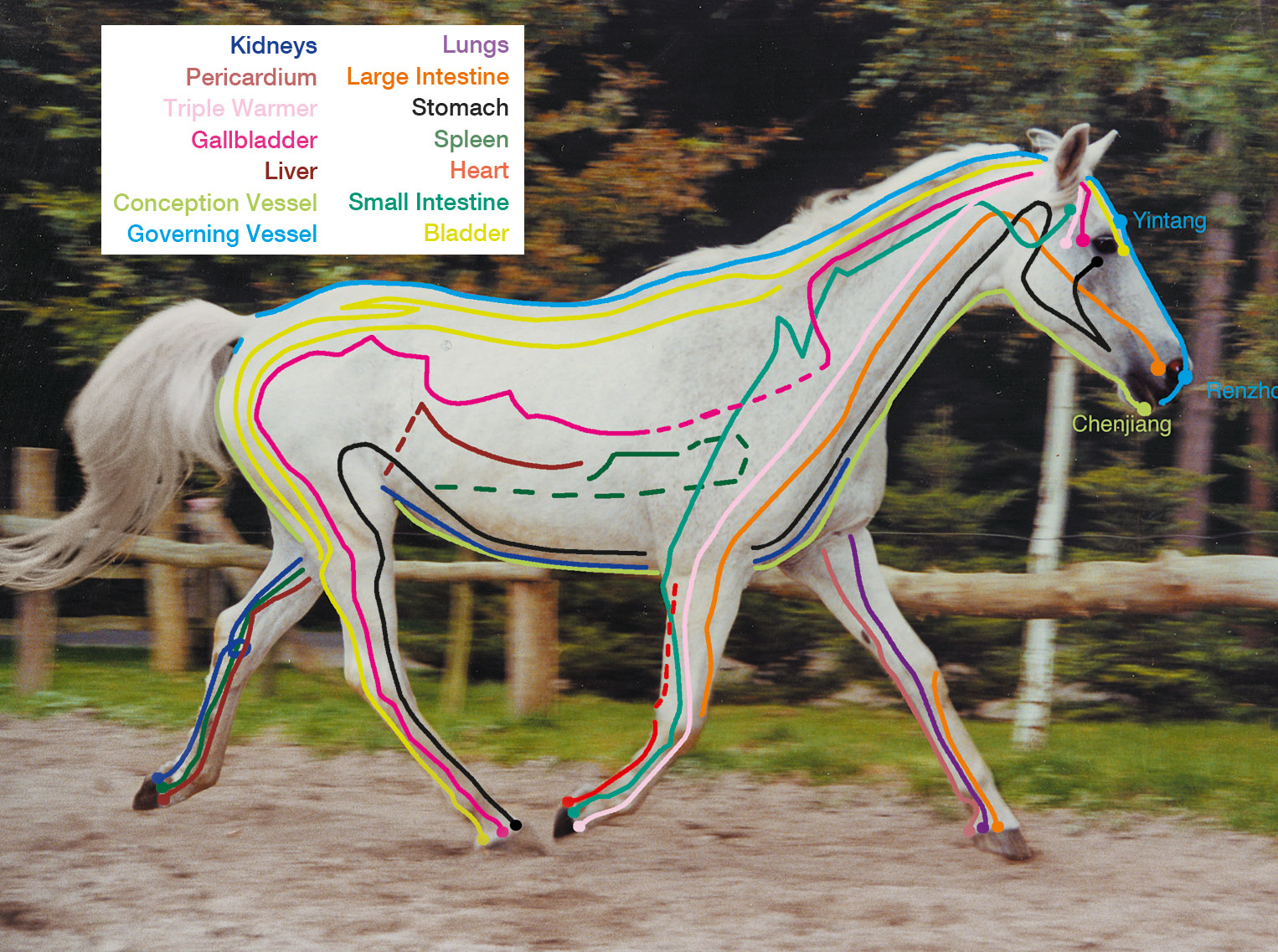You know what’s great? When you can put your hands on your horse and make him feel better: rejuvenated when he’s tired, calm when he’s under stress, and comforted when he’s in pain. While there are lots of ways to pay others to help your horse, there are also a number of modalities you can explore and learn to use, quite safely and correctly, on your own. Acupressure is one of them.
According to Dr. Ina Gösmeier, a German veterinarian with a specialized certification in acupuncture, acupressure can be administered by the layperson, and it can be applied to horses on many levels.
“Those who spend time daily with a horse are often able to spot small, common issues, which can become a bigger problem if left untreated over time,” writes Dr. Ina in her bestselling book Acupressure for Horses. “Acupressure makes it easier to recognize these small discrepancies, then respond in such a way as to positively influence the situation.”

Acupressure points at a glance. Photo by Maren Leichhauer/Kosmos
Here are a few basics you need to know before applying the good kind of pressure to your horse, from the book Acupressure for Horses:
• Before every acupressure application, ask yourself what the goal is. For example, if a horse has appeared unbalanced in recent days or weeks, an acupressure treatment can restore his mental stability.
• The horse is a herd animal. New experiences can fuel his insecurities. Therefore, it always makes sense to apply acupressure as a preventative when a horse is going to have a change in environment, such as a new stable, long-distance travel, or an intense ride. Three days before the anticipated change, you can begin acupressure with a specific balancing prescription and applications according to his type.
• In the case of a physical problem, acupressure itself cannot be the cure, but it can support any and every other type of therapy.

The meridians, or 12 main channels of energy, cover the horse’s body like a river system. Photo by Sabine Heüveldop
• It’s important to practice acupressure in an environment that is not too hectic. For example, while you can demonstrate to riding friends how acupressure is applied in order to share what you’ve learned, the best results will occur when you concentrate completely on your horse.
• Don’t try to apply acupressure when you’re tired or nervous, after a stressful day, or when you’ve experienced an unsettling experience at the barn. When a rider hurries into a stall, approaches the horse quickly and applies acupressure, she is more likely to experience resistance toward the treatment rather than achieve relaxation.

You can help your horse with simple acupressure techniques. Photo by Maren Leichhauer/Kosmos
The following exercises can help you balance your own energy as much as possible before working on your horse:
1. Stand quietly and relax all of your muscles, including the muscles of your face.
2. Concentrate on yourself for a moment, breathing deeply in and out two or three times. It helps to gather energy in the dantian (located a palm-width below your navel) and to place your hands there as you breathe.
3. Now, rub your hands together to generate warmth.
4. Next, use your right hand to stroke the back of your left hand 10 times.
5. Rub your hands again and then distribute the warmth, using the left hand over the back of the right hand this time. Doing this activates your energy, your qi. You should never apply acupressure with cold hands.
6. Beginning at your left wrist, use your right fist to gently bump the inside of your left arm, working up toward the left shoulder. This practice activates the yin meridians of the lungs, heart, and pericardium.
7. When you reach shoulder-height, move your fist to the outside of the arm and continue the gentle knocking back down the arm to the wrist. This animates the yang meridians of the small and large intestines and the triple warmer.
8. When you’ve finished, repeat the process, using your left fist on your right arm this time.
9. Rub the palms of your hands together one last time, then quietly begin acupressure on your horse.
A reminder that before you begin an actual treatment, it is crucial to determine your horse’s type and whether he needs to be calmed or stimulated through treatment. And for acupressure to be applied successfully, the handler must know the precise location and function of the acupressure points.
This excerpt from “Acupressure for Horses” by Dr. Ina Gösmeier is reprinted with permission from Trafalgar Square Books.



 July 13, 2017
July 13, 2017 

























